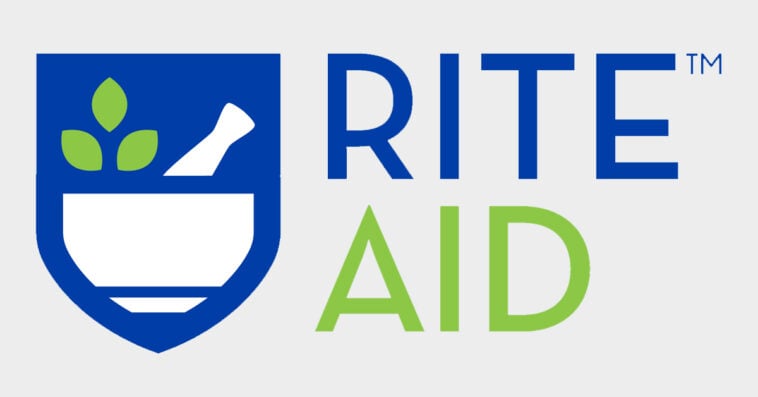For more than six decades, Rite Aid’s familiar storefronts stood as a steadfast symbol of community care across America — a trusted stop for prescriptions, essentials, and everyday needs since its founding in 1962. But on Friday, October 3, 2025, that legacy came to an end as the 63-year-old pharmacy chain announced the shutdown of all its remaining stores. So, what caused the downfall of one of America’s most enduring drugstore names? Read on to find out.
Rite Aid bids farewell after decades of service
Rite Aid, once a dominant force in the American pharmacy landscape, has officially closed the doors of its last 89 stores, marking the end of a chapter that began more than 60 years ago. The decision follows the company’s second bankruptcy filing in under two years, signaling the final blow to a brand that once rivaled CVS and Walgreens in reach and reputation.
“All Rite Aid stores have now closed. We thank our loyal customers for their many years of support,” the company said in a statement on its website.
Although its physical presence has vanished, Rite Aid’s online portal remains partially active, providing former customers with access to their prescription records and information on transferring medications.
Rite Aid’s shutdown underscores the mounting pressures faced by traditional drugstore chains — from online competition to changing shopping habits — leaving behind a void in many neighborhoods that long relied on the drugstore chain’s convenience and care.
How debt, lawsuits, and competition crushed Rite Aid
The story of Rite Aid’s collapse began in October 2023, when the company filed for its first bankruptcy. It was burdened by a debt pile that soared past $4 billion, driven by cutthroat competition from giants like CVS and Walgreens, and, critically, by expensive legal battles over its alleged role in the U.S. opioid crisis.
Rite Aid’s financial downfall was significantly accelerated by its alleged role in the U.S. opioid crisis. The Department of Justice (DOJ) and multiple state lawsuits alleged that the pharmacy chain violated the Controlled Substances Act and the False Claims Act by knowingly dispensing hundreds of thousands of unlawful opioid prescriptions between 2014 and 2019. Specifically, the company was accused of ignoring “red flags” that should have prevented pharmacists from filling dangerous orders, including excessive quantities of highly addictive drugs like oxycodone and fentanyl, and even intentionally deleting internal notes about suspicious prescribers. The resulting legal exposure and settlements, which included a $30 million settlement with West Virginia and a later settlement with the DOJ that involved a claim of over $400 million in the bankruptcy case, swelled the company’s debt pile, making its eventual collapse almost inevitable.
Despite shedding roughly $2 billion in debt and closing approximately 500 locations, Rite Aid briefly emerged from bankruptcy in September 2024 with a new $2.5 billion war chest. Yet, the reprieve was short-lived. By May, the company—which was already operating at half its 2023 footprint with only about 1,250 stores remaining—announced its final strategy: the immediate liquidation of its retail presence. This entailed selling the pharmacy services of more than 1,000 locations to rival operators, including CVS Pharmacy, Walgreens, Albertsons, and Kroger.
For former Rite Aid customers, the rapid transfer of prescriptions to these competitors offered a vital lifeline. This mass acquisition was a crucial saving grace, preventing the scenario where patients, particularly older adults, are forced to travel vast distances to secure their necessary medications after a beloved neighborhood pharmacy shutters its doors for good.
The great pharmacy purge: Drugstore closures beyond Rite Aid
The story of Rite Aid’s collapse, however, is not unique, but rather a symptom of the massive shift facing the entire retail pharmacy sector. Even other industry giants are drastically shrinking their footprints.
CVS announced in November 2021 that it would shutter 900 stores by 2024 as part of a three-year plan to optimize its business, adding to the 244 locations it closed between 2018 and 2020. This major reduction has continued, with the company confirming plans to close hundreds more in 2025.
Similarly, Walgreens has followed suit: former CEO Tim Wentworth told The Wall Street Journal last year that roughly 25% of its stores weren’t profitable, leading the company to announce in October 2024 that it planned to close 1,200 underperforming stores nationwide over the next three years, with 500 set to close in fiscal year 2025.
This collective retreat highlights the severe pressures facing brick-and-mortar drugstores, driven by online competition, razor-thin prescription reimbursement rates, and massive cost-cutting strategies.
Source: CNN

